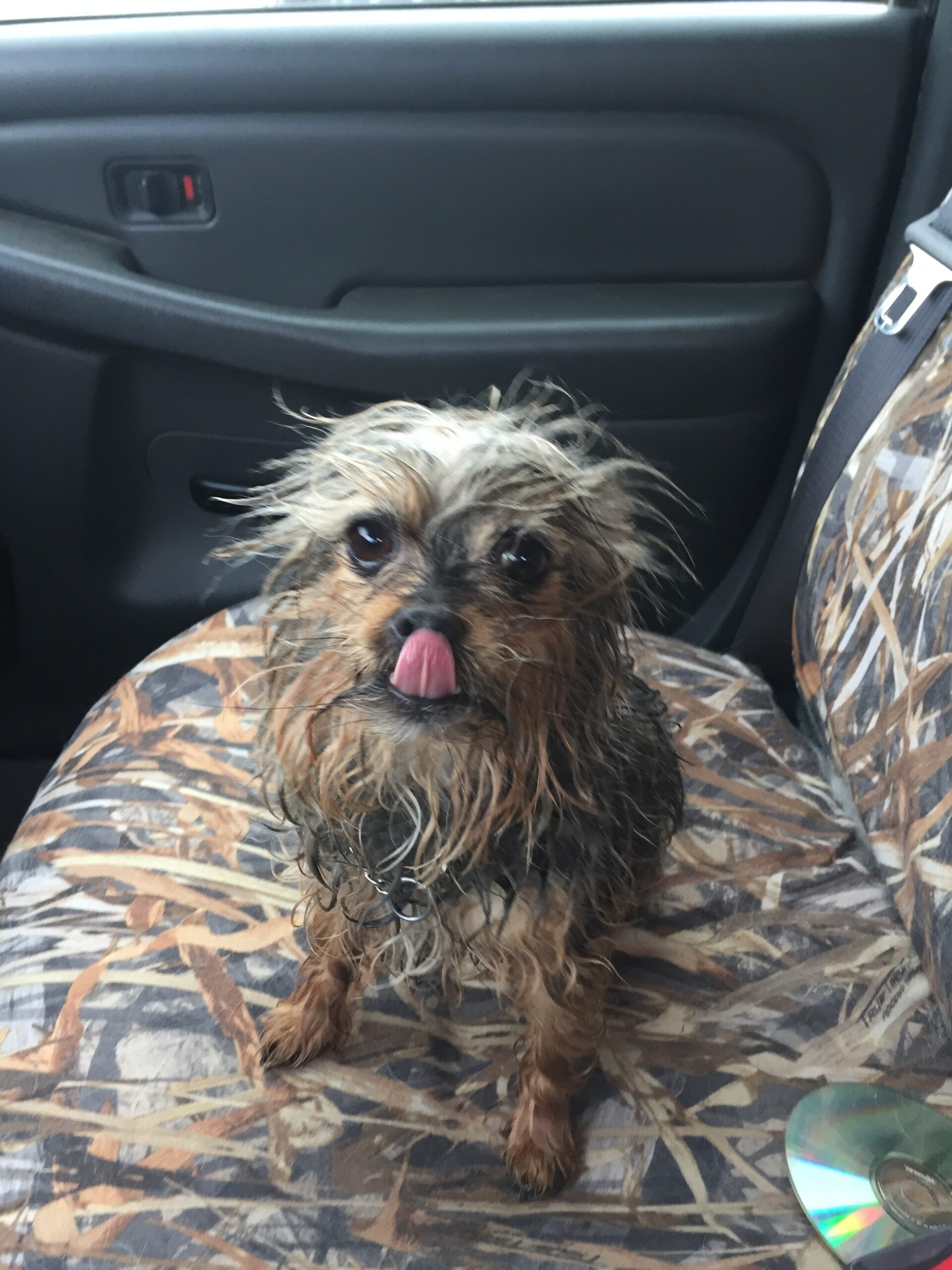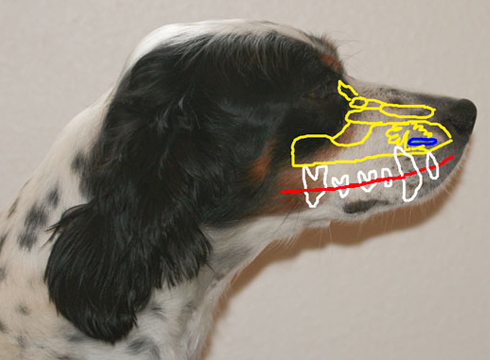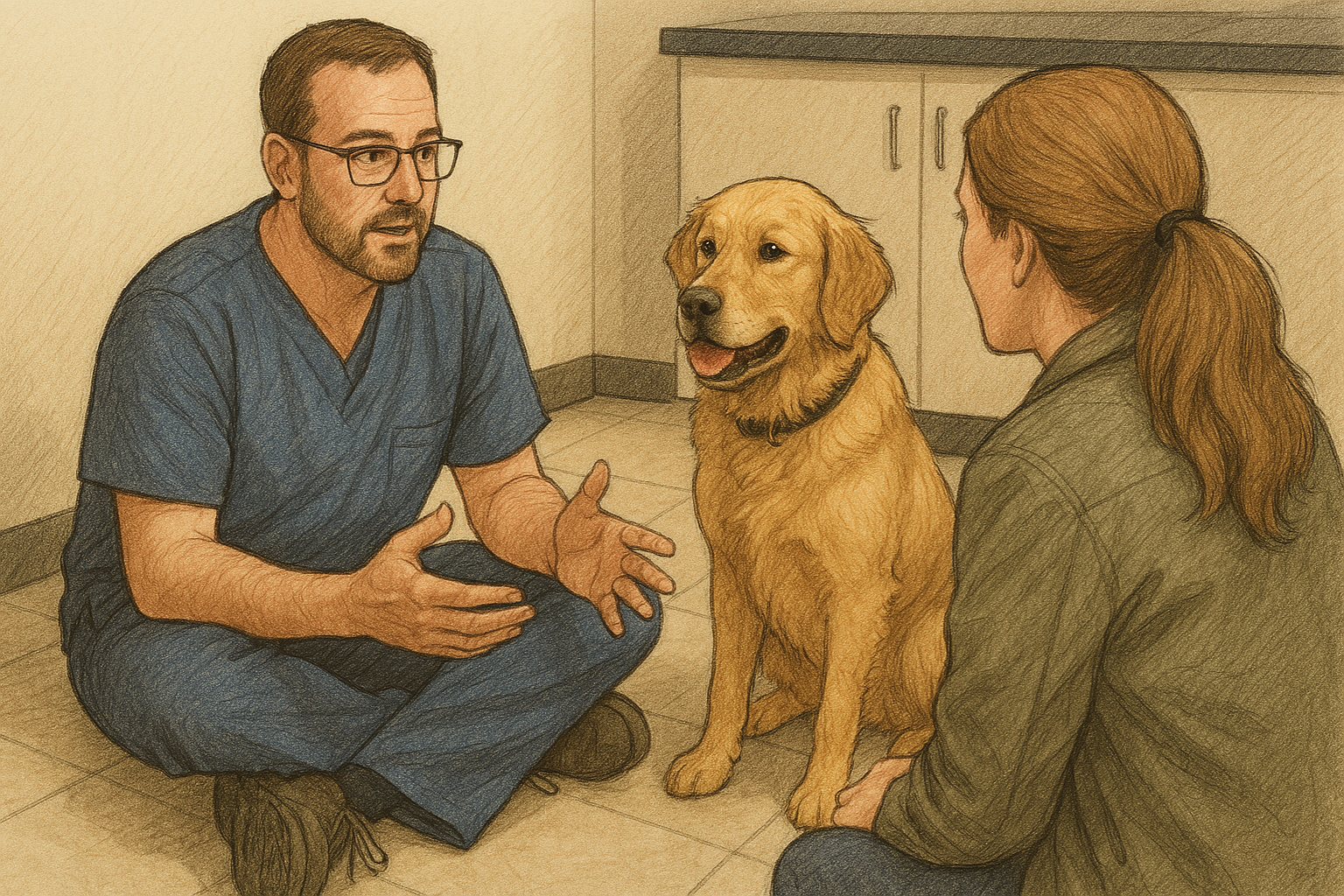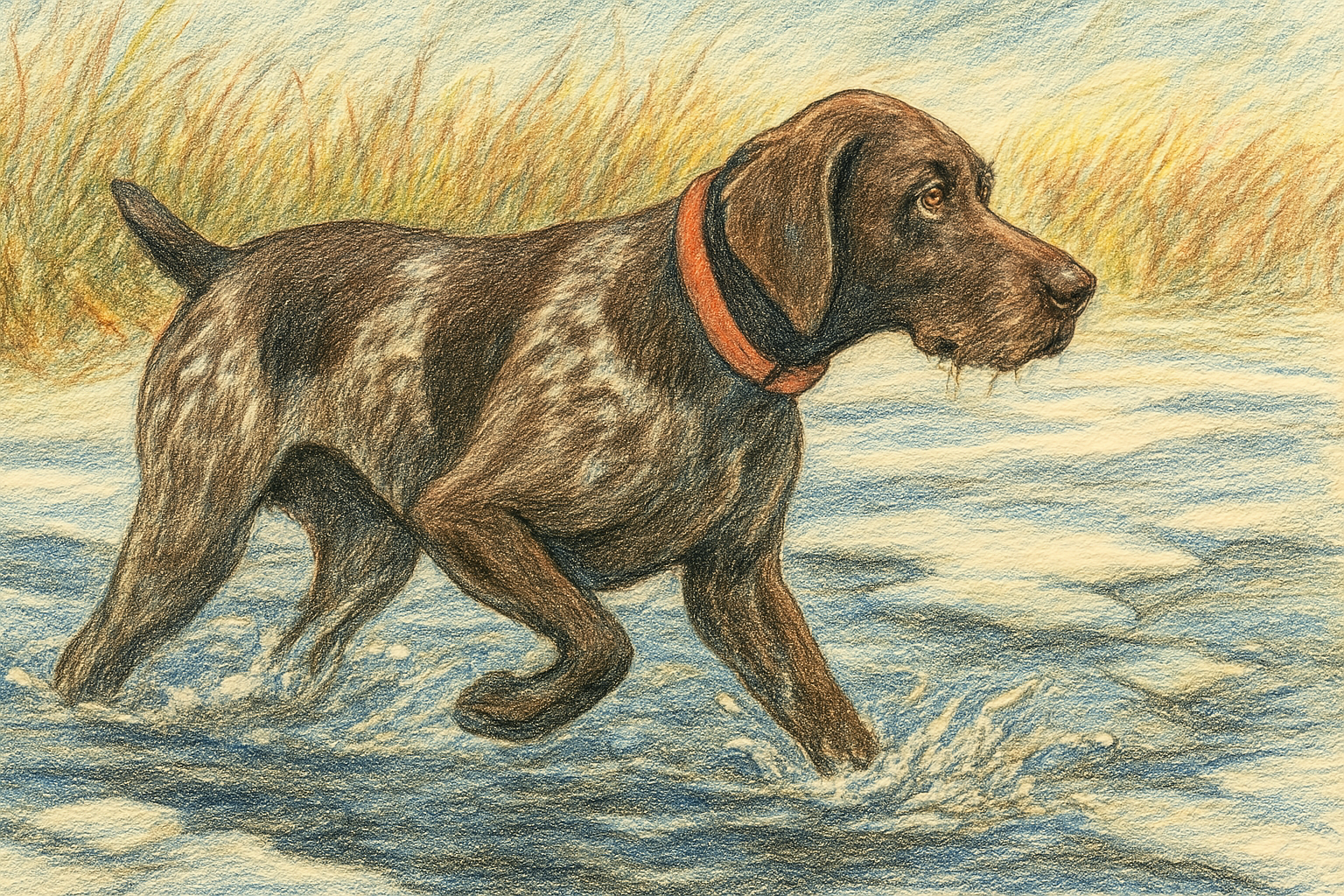Not every dog that has had an impact on my life has been a hunting dog. Emma, my Chesapeake that I got during vet school, was my first hunting dog. Growing up, we had cockapoos, cockers (American, not English), and a Bichon Frise. While I always dreamed of owning a hunting dog the dogs that led me down the path to veterinary medicine were anything but a hunting dog. The current non-hunting dog in my life came to me through marriage, and as she approaches her 17th birthday in under two months, I wanted to write a tribute to this misunderstood misfit. She’s not a dog I would have chosen, but she’s shown me a side of dogs I never fully understood. Having had her in my life, I now have a deeper appreciation for these misfits and for her.
When my wife and I moved in together, we joked that we were the veterinary version of the Brady Bunch: “a lovely lady with two cats and a little dog… a busy guy with three hunting dogs of his own.” In the early stages of our relationship, the cats were the biggest potential hurdle. I’m not a cat aficionado, but I’m also not anti-cat. However, early in my career, I discovered I was horribly allergic to them. Thankfully, for the sake of our relationship, those allergies have improved as I’ve gotten older. Ironically, my wife is even more allergic to cats than I am—she had always assumed she had year-round seasonal allergies, but as she’s aged, her cat and even some dog allergies have worsened.
We planned her move for February, hoping she’d get a taste of winter but not be scared away completely. At the time, she was a Texas girl who had moved to South Florida for the weather. The day we finished loading the moving truck and were getting ready to make the cross-country trek, she got a call from her family in Texas that her dog back home was critically ill. During the drive, she looked at flights back home through the major cities we passed. In the end, she decided to fly out of Sioux Falls very early the day after we arrived.
That meant the task of integrating our household fell to me. Thankfully, I had a house full of refined English dogs and not those of German lineage. The two setters and the cocker wouldn’t be the challenge. The cat integration even went pretty well. I decided to start with Lily, my little white cocker and the least intimidating dog in my pack. She came into the living room all wagging tails and wiggles. Jessie, the male cat, watched her from the entertainment center, and as she walked past, he pounced on her back, grabbed her by the scruff, and rode her to the ground like a mountain lion on a deer. She rolled over submissively, he hissed in her face, and then strutted away like he owned the place. That was the one and only cat-dog incident we ever had. Jessie had established the pecking order.
Aggie, Krista’s little five-pound Chihuahua-Yorkie cross, was another matter altogether. She started her life in Texas as a gift for Krista’s mom. When Krista went home for Christmas, she couldn’t understand why nobody would take the pair of stollen eyeglasses away from the little puppy. Her family gladly let her try, and after a half-hour of attempting to wrangle the seven-month-old demon, it was decided she’d take the dog back to Florida with her to work with a behaviorist at her clinic. That set the wheels in motion for Aggie’s eventual arrival in my life.
I’ll never forget my first interaction with Aggie. When I visited Krista in Florida, we always grabbed Chick-fil-A—at the time, a southern delicacy we didn’t have in South Dakota—on the way home from the airport. The first fry I gave Aggie went as expected, and I was certain I had won her over. When I reached down to offer her another, it took longer than it should have for my brain to register that she wasn’t taking the treat—she was mauling my fingers. While Krista had warned me about Aggie, that was the moment I realized she just wasn’t a normal dog – she was a very adorable dog with a very short friend list.
Before moving to South Dakota, she had seen a veterinary behaviorist, trainer and had been placed on behavior meds. Aggie pretty much lived with a collar and leash on because she was unpredictable and not always handleable. Once she moved in, and I was on my own for a bit, I decided that couldn’t continue. I went to the hardware store and bought leather gloves of varying thicknesses—I needed to be able to handle her, have some dexterity, but not get bit too hard. Step one was getting her collar and leash off.
As soon as I picked her up, she went into attack mode. Thankfully, I had chosen a pair thick enough that I didn’t feel a thing. When she realized her usual reaction wasn’t working, she started screaming like she was being murdered and promptly peed, pooped, and expressed her anal glands everywhere. Once she calmed down, I gave her a bath—without so much as a peep from her. Since I was on a roll, I decided the collar would go back on, but not the leash. She started to curl her lip, but with an assertive “ah, ah, ah,” she immediately stopped. I set her down, and just like that, she was a new, friendly, happy dog.
I’d love to say that solved all her behavior issues, but it didn’t. However, I never needed the gloves again, and for the next decade, we had a pretty good relationship—though she remained a challenge for others. She would occasionally come on hunting trips with me and enjoyed being my truck dog. She was the misfit among the hunting dogs, and while she would occasionally attack them, they always responded with shock rather than aggression.
Having kids changed Aggie’s world, and not always for the better. While Lily, Belle, Boomer, and Vi found their way into the kids’ hearts and beds, Aggie couldn’t let her guard down. She looks like she should be the cuddliest dog in the world, and all three kids have succumbed to that temptation—only to be rewarded with nips. By the time Hailey entered the picture, the old girl was essentially toothless. Her attacks are still scary, even to me, but her bites are harmless.
At nearly 17, age has caught up with Aggie, though not as severely as with most dogs her age. She’s developed corneal calcifications, making her already questionable vision even worse. Her hearing is minimal but still present. Until a couple of weeks ago, her blood work was pristine, but now, there are early signs of kidney and heart changes. Every few days, she skips a meal or two, sending both of us into a mild panic—only to eat the next meal like nothing happened. She still plays in the evenings, though briefly, looking like the same little dog I first met all those years ago.
Early in my career, I had a 15- or 16-year-old Newfoundland that started to fail. After unrewarding diagnostics, I consulted an internist. Their response stuck with me: “The dog is old—it’s starting to outlive its organs.” At the time, I thought that was a bullshit answer. Now, after seeing it countless times in client dogs and my own, I understand. Sometimes, age just catches up with them. Aggie’s still fighting, but Father Time has entered the race.
Owning Aggie changed my perspective. Before her, I never thought about mental developmental disabilities in dogs. I attributed behavior issues to training, lack of training, or fear. But Aggie’s issues weren’t solvable—only manageable.
She dearly loves to be loved but will randomly snap at the person giving it to her. The very thing she craves, she has to push away driven by some unknown glitch in her wiring. She’s had a good life. I don’t want to give the impression that she’s this angry, untouchable little dog. Quite the opposite, she’s had many great life adventures ranging from hunting trips with the big dogs to guiding a kayak trip from the deck of the kayak. There is not a more passionate fishing dog and one of her greatest joys is patrolling the dock waiting for the next bite. She demands to not be left out and if she suspects an adventure or trip is in the works, she’s standing at the door begging to go along. Even at nearly 17 she will get the playful zoomies at nights acting and interacting like a puppy. For the majority of the time, she’s a happy, playful little dog who occasionally short-circuits and it’s in those moments I find myself wondering how much better her life could be if her brain would just allow it?
Last summer, Krista and the kids flew to Texas, and I drove with the three dogs. Vi and Boomer rode in crates, but Aggie got a fluffy bed in the passenger seat—once again my co-pilot. It’s funny how a 16-year-old, nearly deaf and blind dog will sleep for 15 hours straight but spring to life at the first whiff of food. She’d prance around on the console acting like a puppy, begging to be my best friend in the whole world in exchange for a bite.
Aggie is the last of the six pets that Krista and I had when we started this life journey together. She will always serve as a bookmark to the start of the most important chapter of my life. When I lost Lily and Belle, nearly back-to-back, we had decided to wait on getting a puppy as introducing that chaos into Aggie’s life would not be fair. Over the last year, as my puppy fever has ramped up, I had always framed the discussion around, “when Aggie is gone.” I didn’t think about the carelessness of those words because at the time there were no indications that her time with us was measurable. A couple of weeks ago when the bloodwork showed changes, no matter how slight, it suddenly hit me that maybe I wasn’t quite ready for a pup…that while she may not be the easiest dog to love, she is a dog that we do love and I’m not quite ready to mark the closing of this chapter in life. Sometimes even misfits find a way deep into your heart.



